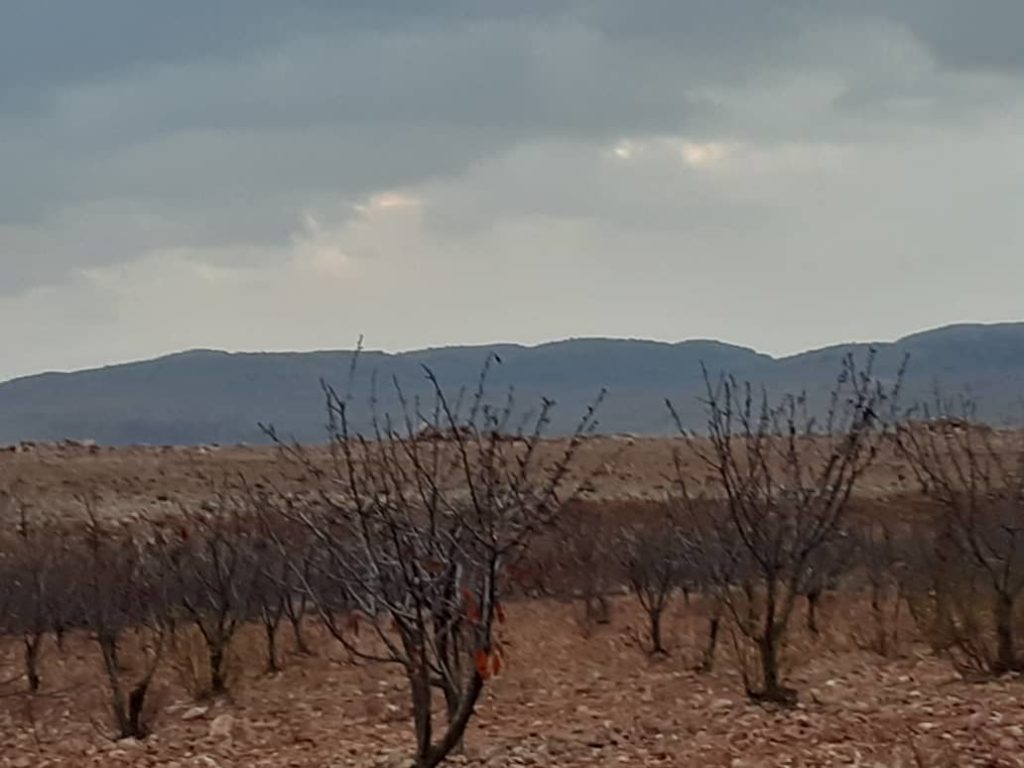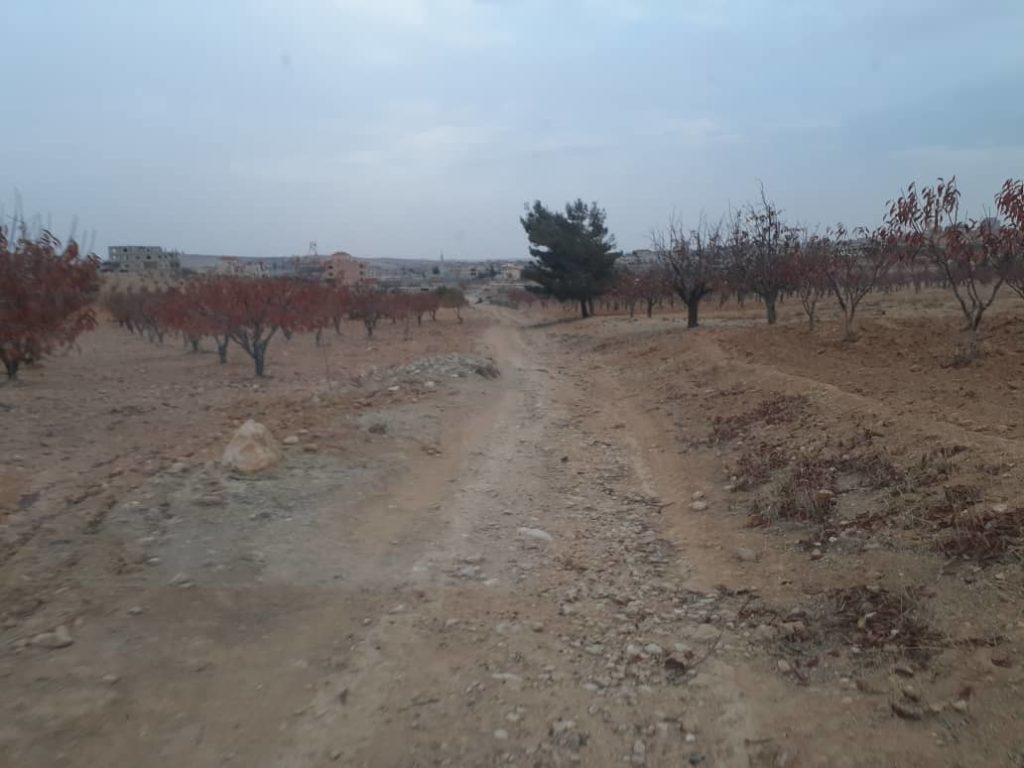Every evening, Karim (a pseudonym) gets in his truck, sets off from the northern Bekaa Valley in Lebanon and takes one of the dirt roads crossing the rugged peaks into Syria. Since the beginning of the year, Karim, who is in his late thirties, has been transporting fuel into Syria. His truck has a capacity of 45,000 liter. He gets $250 for every delivery.
Before reaching the border, Karim passes several checkpoints, in the town of Bazaliah, for example, yet without ever being stopped or searched. He transported over 150 loads of diesel and gasoline during the first six months of the year.
Karim is not alone. Dozens of trucks loaded with subsidized fuel do exactly the same in an unprecedented escalation of smuggling operations between Lebanon and Syria.

“More than two million liters a day are smuggled into Syria, while the Lebanese market needs some 5 million liters a day,” said George Al-Barraks a member of the Lebanese Syndicate of Petrol Station Owners. Annually, he estimated, up to one billion liters of fuel are smuggled into Syria,
Last September, the Lebanese government discussed a draft law that would allow the Lebanese Central Bank (BDL) to use its strategic reserves to continue financing the subsidizing of fuel imports. The government helped finance the imports in foreign currency to keep fuel affordable for its citizens.
Last September, the authorities also raised the fuel import exchange rate to 8,000 Lebanese Pounds (LBP) to the dollar.
This was the second amendment in a short time. In June, they had set the rate at 3,900 LBP to the dollar, instead of the official fixed rate of 1,507 LBP to the dollar. Meanwhile the national currency’s black market rate hovers around 20,000 LBP to the dollar.
“Smuggling takes place in all kinds of ways,” Karim said. “By truck, bicycle, donkey, in private cars or in Syrian army trucks.”
Window to the World
Smuggling between Lebanon and Syria, which share a porous border with countless small informal crossings, is not at all a new phenomenon. But its character has changed in recent years, due to the Syrian War and Lebanon’s economic crisis, which has crippled the country since October 2019.
“Smuggling between the two countries has changed direction several times over the years, and such changes are linked to the changes in state support in both countries,” said Karam Shaar, a non-resident scholar at the Middle East Institute in Washington. “Whenever the price of fuel is cheaper in one country, there will be a bigger incentive to smuggle fuel towards the other country.”
Before 2011, smuggled goods from Lebanon, such as tobacco, alcohol, leather, electronics, clothing and chocolate, arrived in Syrian towns close to the border, such as Madaya and Sarghaia. The goods would then be transported to Damascus to be sold on its markets, such as the famous smuggling market in Qaboun near the headquarters of the Syrian special forces.
The situation changed after the outbreak of the Syrian revolution, when the West imposed strict sanctions on the Syrian regime, which negatively affected its finances. As time passed and the Syrian conflict dragged on, reliance on Lebanon grew.
Beirut and Lebanon’s ports became Syria’s window to the world. Front companies and supply networks over land were established to overcome the international siege targeting the increasingly isolated regime.
However, the Beirut port explosion in August 2020 sabotaged the scheme drawn up by the regime and its Lebanese allies. To ensure supplies would continue to enter the country, it was necessary to rely on smuggling routes away from the official border crossings.
The hike in smuggling led the British embassy in Lebanon to announce in January that it was providing Lebanon with 100 Land Rover WMIK armored patrol vehicles to enforce the country’s border regiments. Yet, smuggling continued. Occasionally, the Lebanese army announced arrests. On July 8, for example, army units arrested seven Lebanese and one Palestinian for trying to smuggle 3,000 liters of gasoline and a large quantity of tobacco into Syria. The goods were loaded in a car, a van, five pickup trucks and a truck.
Food Insecurity
Both Syria and Lebanon suffer from a broken economy. And both countries are increasingly threatened by food insecurity, according to the United Nations Food and Agriculture Organization of the (FAO).
The countries share a 375km long border, pierced by five official crossings: Al-Aboudia, Al-Arida and Jisr Qamar (Qubay’a) in the north and Masnaa and Josseh Al-Qaa in the east.
However, there are numerous other ways for smugglers to cross. On both sides of the border, there is a chain of intermediaries and beneficiaries. Through a series of exclusive interviews with residents, eyewitnesses and drivers we reveal the final destinations of what is smuggled from Lebanon to Syria.
All people we met agreed that the illegal crossings are exploited by people who enjoy protection from major Lebanese parties, and that the trade generates huge profits. This was confirmed last April by former Lebanese Minister of Energy, Raymond Ghajar who pointed at the disparity in gasoline prices in Lebanon and Syria, saying this allowed smugglers to generate huge revenues. How are commodities, such as diesel and gasoline transported? Are there facilities inside Lebanon that smugglers exploit? And where do the transports go?
Read Also:
$235 Million
Earlier this year, drivers and smugglers started moving trucks, carrying officially stamped receipts, which they said they obtained from the port authorities in Tripoli. The receipts were posted and circulated on social media. And they were shown to us by drivers transporting oil derivatives from Lebanon to Syria.
“At the time, we received pre-signed, blank receipts,” said driver Karim. “We only needed to write down a destination. On one occasion, I wrote that the destination is a location opposite the Lebanese border towns of Zita and Blouzeh. The trucks were then taken into Syria by the Fourth Division of the Syrian army.”
“In a video posted online, a row of trucks can be seen being labeled with vegetable oil,” Karim said. “The receipts too indicated that the trucks’ content was vegetable oil to avoid being inspected at checkpoints. But the real content was oil derivatives.”


“I saw warehouses in the Qalamoun area, on which “Fourth Division`was written,” said Karim. “We unloaded our cargo there.” According to Karim the fuel’s owners are the ones in charge of facilitating the transport to Syria. And it is them who determine the route to reach Syrian territory.
“The fuel we were transporting was owned by traders, including some close to Hezbollah and Syrian businessmen,” he said. “There are more than 50 trucks operating on these routes on a daily basis.”
The number of transports reflects the demand for gasoline in Syria and the size of supply in Lebanon. Between 2018 and 2019, Lebanon’s import of gasoline increased by 89,316 tons or 4.4 percent.
In Lebanon, 20 liters of gasoline 95 octane and gasoline 98 octane cost 308,600 LBP and 318,200 pounds respectively, which is a bit more than ten dollars according to the black market exchange rate. In Syria, the same quantity costs some 140,000 Syrian Pounds or some $40.
In a study conducted earlier this year, the International Information Corporation estimated that smuggling subsidized fuel from Lebanon to Syria cost the Lebanese state some $235 million annually.
Zabadani
Smuggling from Lebanon to Syria follows many routes and mostly takes place at night, mostly around the city of Zabadani, the towns in the western Qalamoun, and the countryside south of Homs.
The fuel trade between the two countries is estimated at some 80 percent of total trade, while smuggling makes up some 20 percent. In both cases, the Syrian Fourth Division is the most prominent player and coordinator of the business.
“The Assal Al-Ward hills offer some of the most prominent routes in the Al-Qalamoun region for the smuggling of fuel between Lebanon and Syria.,” said 36-year-old Hazem who lives in the town of Assal Al-Ward.
According to Hazem, the smuggling route starts in Lebanon’s Bekaa Valley. From there it goes to the border area of Ras al-Jawzah within Lebanon and then enters Syrian territory through an illegal crossing known locally as Al-Mubasher to finally reach Assal al-Ward.
Hazem stressed the crossing is old. It has been used for many years. In 2018, it was paved to facilitate the transit of trucks. Trucks carrying cargo into Syrian territory do not have number plates. A convoy usually consists of 4 trucks.
The Ras al-Ain checkpoint, located in the Ras al-Ain area near Assal al-Ward, along with the Fourth Division’s Kart checkpoint, which is located south of the border detachment in Assal al-Ward, are some of the most prominent joint checkpoints near the smuggling corridors.


According to Hazem, the trucks enter from the Al-Mubas crossing under protection of Hezbollah operatives, and the delivery usually takes place in an area known as Mazraat Al-Durra, located between Assal Al-Ward and the border. Elements of “Rabiah Security” receive the cargo and transfer them to three farms on the outskirts of the town, before they are moved out of the area towards Damascus.
“The transport is coordinated between the security forces of the Fourth Division and Hezbollah,” Hazem said. “The Fourth Division’s security people bring back the emptied trucks and receive the full ones.”
According to a source familiar with smuggling in the region, the main point in smuggling fuel has become the Zabadani crossing. This too has been an illegal crossing used for smuggling for many years. But trucks could not pass before paving took place in July 2020. Today, two convoys a week pass by, each consisting of four to ten trucks.
According to the same source, the fuel shipments are usually not meant for trade on the black market, but for the Syrian army. They are temporarily stored in a warehouse located between the city of Zabadani and the town of Sergaya.
After storage, most of the fuel is transferred to warehouses in the town of Jdeidet Artouz in the countryside west of Damascus to be distributed to military units at a later time. The remainder is sold to merchants on the black market.
Abu Ali
The smuggling route to Qara starts from the official Al-Zamrani border crossing, which has been under control of Hezbollah since 2015. It has been mainly used for transporting the party’s weapons and ammunition. More recently, fuel was added.
Abu Ali, a 52-year-old farmer from Qara, said convoys pass about once a month, the smallest of which consists of ten trucks.
“After entering the Al-Zamrani crossing, the trucks head to the city of Qara,” he said. “Delivery used to take place at the party headquarters. The mechanism changed after Hezbollah withdrew from the headquarters last year. So, the delivery process takes place in the Mira area between Qara and the Al-Zamrani crossing.”
As for the border towns of Rankos and Fleita, smuggling starts from the outskirts and is mostly for the benefit of smugglers from the region, according to local residents. The smuggling taking place here concerns rather small quantities taken by 4WD cars or motorcycles, which carry four gallons with a capacity of 50 liters each.
The checkpoint in the village of Tufail, which is run jointly by Military Security and the Fourth Division, with members of Hezbollah nearby, is one of the most important corridors for securing transports between Qalamoun and Tufail, and vice versa.
A little to the south along the Syrian-Lebanese border, lies the area of Jdeidet Yabous. According to local residents, fuel is at times brought in on motorcycles or animals.
Figures provided by the security services show that daily some 200 to 300 transfers take place by car between Lebanon and Syria. They fill up a tank for 60,000 LBP, which they sell for 40,000 Syrian pounds, or about 130,000 LBP. It can be sold in Damascus for 70,000 Syrian pounds.
In Syria, the fuel crisis appears in the form of long queues in front of public and private distribution centers. Last July, the Syrian Ministry of Internal Trade and Consumer Protection raised the price of octane 95 gasoline by 20 percent, from 2,500 Syrian Pounds to 3,000 Syrian Pounds a liter. The policy of raising prices aims to reduce consumption amidst the shortage in supply.


The most used border crossings for fuel smuggling are located near the city of Homs, in villages adjacent to the province of Akkar, such as: Tal Kalakh and Dabousiyah.
The city of Al-Qusayr in the Homs countryside, which the Syrian regime regained with the help of Hezbollah in 2013, is an important point on the smuggling routes. Hundreds of convoys have passed over the past years. The road is controlled by Hezbollah on both the Lebanese and Syrian side.
The city of Al-Qusayr includes illegal ports (??), all of which are used to smuggle fuel. The shipments often stem from the town of Al-Qasr, which is located in the north of Lebanon’s Hermel district.
The fuel arrives in Lebanese trucks which in Al Qusayr are changed for Syrian ones. Before the fuel crisis in Lebanon, some 50 to 60 fuel trucks a day would arrive, which has gradually declined ever since.
The Return of Reverse Smuggling
During the past two months, smuggling from Lebanon to Syria stopped almost completely, due to tightening border controls and the closure of mountain passes by the Lebanese army patrols. Now it seems reverse smuggling has started again, as trucks have started to transport fuel from Banias to Lebanon using the same routes.
There are no indications that the fuel crisis in Syria will end any time soon, as long as sanctions stay in place and the country’s main oil wells remain outside the regime’s control. This means the only way to provide fuel will be a combination of smuggling and raising prices to reduce consumption.
According to Karam Shaar of the Middle East Institute, the continuation of smuggling between the two countries has two negative effects. First, smuggling from Lebanon to Syria means that the Lebanese government financially supports fuel for the benefit of the Syrian people.
Second, the networks smuggling fuel and other goods are linked to militias fighting in Syria, primarily Hezbollah. As they benefit from the smuggling, it will contribute to dragging on the conflict for a longer period of time.
International organizations and donors have long called for a policy to reduce the smuggling phenomenon and its impact on the two countries. Neither can afford to bear more costs and burdens. Perhaps the only solution is the price of fuel to be unified in both countries.
This investigation was carried out under the supervision of the Syrian Investigative Reporting for Accountability Journalism (Siraj) with the participation of our colleague Ahmed Haj Hamdo.
Read Also:











